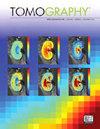A Quantitative Multiparametric MRI Analysis Platform for Estimation of Robust Imaging Biomarkers in Clinical Oncology
IF 2.2
4区 医学
Q2 RADIOLOGY, NUCLEAR MEDICINE & MEDICAL IMAGING
引用次数: 0
Abstract
There is a need to develop user-friendly imaging tools estimating robust quantitative biomarkers (QIBs) from multiparametric (mp)MRI for clinical applications in oncology. Quantitative metrics derived from (mp)MRI can monitor and predict early responses to treatment, often prior to anatomical changes. We have developed a vendor-agnostic, flexible, and user-friendly MATLAB-based toolkit, MRI-Quantitative Analysis and Multiparametric Evaluation Routines (“MRI-QAMPER”, current release v3.0), for the estimation of quantitative metrics from dynamic contrast-enhanced (DCE) and multi-b value diffusion-weighted (DW) MR and MR relaxometry. MRI-QAMPER’s functionality includes generating numerical parametric maps from these methods reflecting tumor permeability, cellularity, and tissue morphology. MRI-QAMPER routines were validated using digital reference objects (DROs) for DCE and DW MRI, serving as initial approval stages in the National Cancer Institute Quantitative Imaging Network (NCI/QIN) software benchmark. MRI-QAMPER has participated in DCE and DW MRI Collaborative Challenge Projects (CCPs), which are key technical stages in the NCI/QIN benchmark. In a DCE CCP, QAMPER presented the best repeatability coefficient (RC = 0.56) across test–retest brain metastasis data, out of ten participating DCE software packages. In a DW CCP, QAMPER ranked among the top five (out of fourteen) tools with the highest area under the curve (AUC) for prostate cancer detection. This platform can seamlessly process mpMRI data from brain, head and neck, thyroid, prostate, pancreas, and bladder cancer. MRI-QAMPER prospectively analyzes dose de-escalation trial data for oropharyngeal cancer, which has earned it advanced NCI/QIN approval for expanded usage and applications in wider clinical trials.一个定量多参数MRI分析平台,用于估计临床肿瘤学中鲁棒成像生物标志物
有必要开发用户友好的成像工具,估计多参数(mp)MRI中可靠的定量生物标志物(qib),用于肿瘤学的临床应用。磁共振成像的定量指标可以监测和预测治疗的早期反应,通常在解剖改变之前。我们开发了一个供应商不可知的,灵活的,用户友好的基于matlab的工具包,mri定量分析和多参数评估例程(“MRI-QAMPER”,当前版本v3.0),用于估计动态对比度增强(DCE)和多b值扩散加权(DW) MR和MR松弛测量的定量指标。MRI-QAMPER的功能包括从这些方法生成反映肿瘤通透性、细胞性和组织形态的数值参数图。MRI- qamper程序使用DCE和DW MRI的数字参考对象(DROs)进行验证,作为国家癌症研究所定量成像网络(NCI/QIN)软件基准的初始批准阶段。MRI- qamper参与了DCE和DW MRI协作挑战项目(CCPs),这是NCI/QIN基准的关键技术阶段。在DCE CCP中,在10个参与的DCE软件包中,QAMPER在测试-再测试脑转移数据中具有最佳的重复性系数(RC = 0.56)。在DW CCP中,QAMPER是前列腺癌检测曲线下面积(AUC)最高的前五种(14种)工具之一。该平台可以无缝地处理来自脑部、头颈部、甲状腺、前列腺、胰腺和膀胱癌的mpMRI数据。MRI-QAMPER前瞻性分析口咽癌剂量降级试验数据,已获得NCI/QIN的高级批准,可在更广泛的临床试验中扩大使用和应用。
本文章由计算机程序翻译,如有差异,请以英文原文为准。
求助全文
约1分钟内获得全文
求助全文
来源期刊

Tomography
Medicine-Radiology, Nuclear Medicine and Imaging
CiteScore
2.70
自引率
10.50%
发文量
222
期刊介绍:
TomographyTM publishes basic (technical and pre-clinical) and clinical scientific articles which involve the advancement of imaging technologies. Tomography encompasses studies that use single or multiple imaging modalities including for example CT, US, PET, SPECT, MR and hyperpolarization technologies, as well as optical modalities (i.e. bioluminescence, photoacoustic, endomicroscopy, fiber optic imaging and optical computed tomography) in basic sciences, engineering, preclinical and clinical medicine.
Tomography also welcomes studies involving exploration and refinement of contrast mechanisms and image-derived metrics within and across modalities toward the development of novel imaging probes for image-based feedback and intervention. The use of imaging in biology and medicine provides unparalleled opportunities to noninvasively interrogate tissues to obtain real-time dynamic and quantitative information required for diagnosis and response to interventions and to follow evolving pathological conditions. As multi-modal studies and the complexities of imaging technologies themselves are ever increasing to provide advanced information to scientists and clinicians.
Tomography provides a unique publication venue allowing investigators the opportunity to more precisely communicate integrated findings related to the diverse and heterogeneous features associated with underlying anatomical, physiological, functional, metabolic and molecular genetic activities of normal and diseased tissue. Thus Tomography publishes peer-reviewed articles which involve the broad use of imaging of any tissue and disease type including both preclinical and clinical investigations. In addition, hardware/software along with chemical and molecular probe advances are welcome as they are deemed to significantly contribute towards the long-term goal of improving the overall impact of imaging on scientific and clinical discovery.
 求助内容:
求助内容: 应助结果提醒方式:
应助结果提醒方式:


